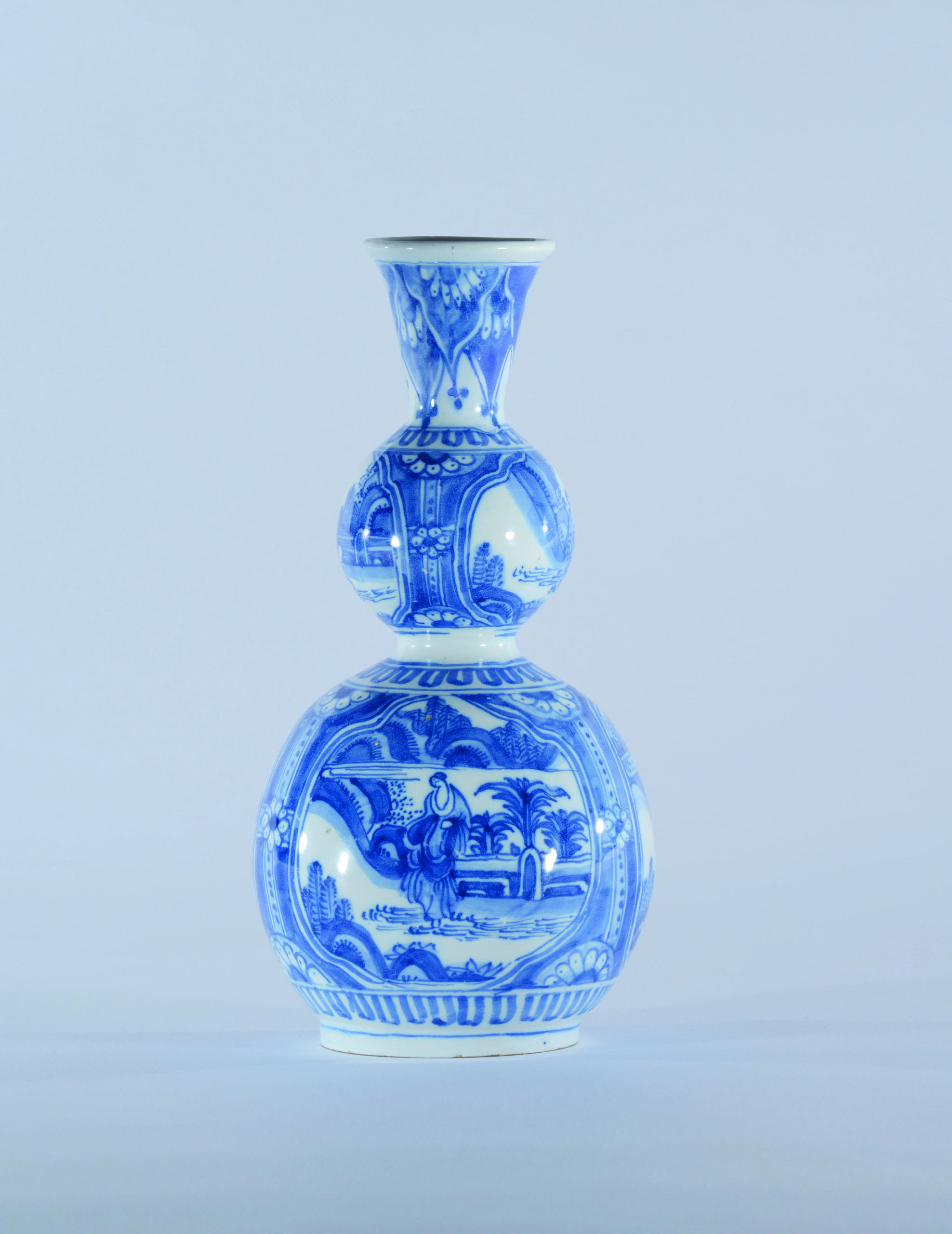
[popup_trigger id=”13756″ tag=”span”]![]() [/popup_trigger]
[/popup_trigger]
Images on this website are licensed under a
Creative Commons Attribution-NoDerivs 3.0 Unported License.
OBJECT
•D2130. Blue and White Double-Gourd-Shaped Vase
Delft, circa 1670
Painted on the spherical body with three panels of a Chinese figure in a landscape, each separated by a blossom-centered cruciform device reserved on a blue ground above a border of stylized leaves around the base, repeated on the shoulder, the upper section with two panels of a Chinese figure in a landscape, again separated by a blossom-centered cruciform device reserved on a blue ground below a border of stylized leaves on the shoulder, the upper rim with a large band of elongated ruyi-heads reserved with demi- flowerheads.
Height: 29 cm. (11.4 in.)
NOTE
The decoration including the blossom-centered cruciform devices on this vase is probably inspired by a Chinese porcelain example. A Kraak-porcelain jar from circa 1600-1630 with similar devices to divide panels of flowering plants is in the Groninger Museum, Groningen (inv. no. 1996- 1257). However the Delft painter did not decorate the present vase in a Kraak-style, but relied on the Chinese traditional wares to place in the panels. The transitional wares were decorated on the entire area with a continuous scene that often consisted of landscapes with animals or figures either conversing or in a moment of spirited action. The Delftware painters adapted the scenery on transitional wares for their own decorations. Figural subjects were placed on a terrace or in a landscape of rock work and pine trees. This vase can be attributed to a group of faience that is decorated with chinoiserie scenes of figures seated in a landscape of rock work and trees and was manufactured between 1660 and 1680.
Interestingly, objects such as jars decorated in this style are also known in Japanese porcelain, of which an example can be found in the Groninger Museum in Groningen (inv. no. 1986-0390). This Japanese jar from circa 1670-1690 is a copy of a Chinese model, however the decoration was based on a Delftware object in that style.
SIMILAR EXAMPLES
A blue and white covered jar from circa 1670 with a similar decoration of panels and blossom-centered cruciforms is illustrated in Aronson 2006, pp. 14- 15, no. 7








